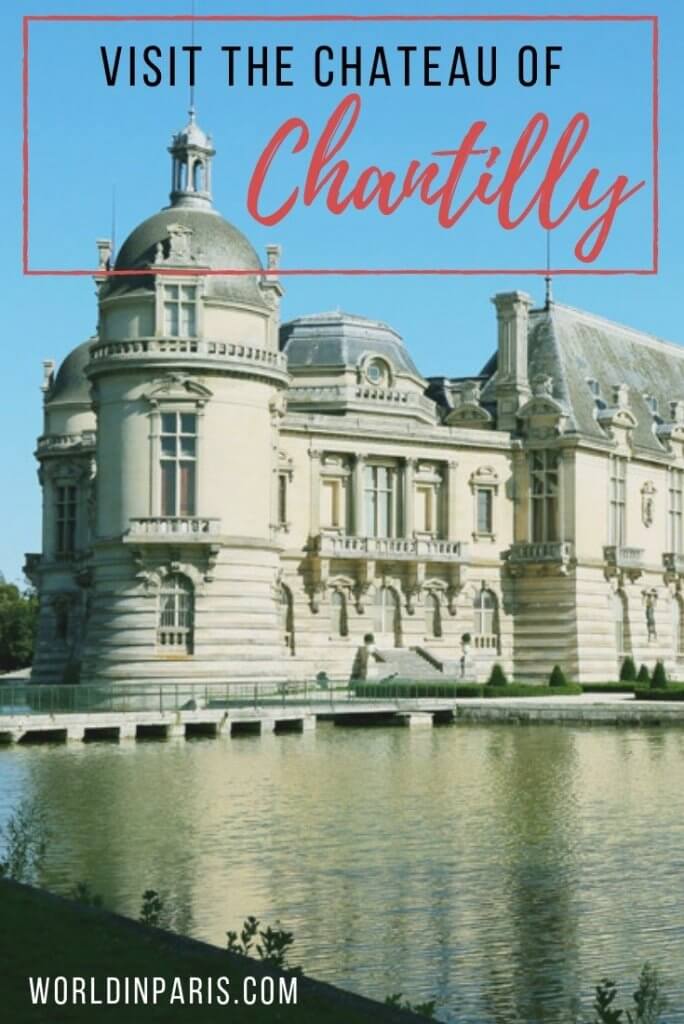Visit Chantilly, France
Chantilly is one of the most popular day trips from Paris. Click here for the list of best day trips from Paris.
Looking for an alternative to a day trip to Versailles without the crowds? Then, visit Chantilly, a picturesque town in Northern France, far from the French capital’s hustle and bustle.
Lesser-known than the Palace of Versailles, Château de Fontainebleau, or the Loire Valley Castles, Château de Chantilly is one of the most beautiful castles near Paris, well worth the visit.
Chantilly, however, is much more than its château; the town has other attractive sights like the Great Stables or the Horse Museum.
Overall, Paris – Chantilly is one the best day trips from Paris by train, and also one of the easiest. Here’s the list of top things to do in Chantilly for a fun day out of Paris.

How to Get to Chantilly from Paris
By Train
Paris to Chantilly by train is straightforward. The train Paris – Chantilly leaves from Gare du Nord train station hourly, from the Grandes Lignes area (platforms, 9 to 18). The distance Paris Chantilly is only 40 km, and count it for taking 20 minutes.
Be aware that Gare du Nord is the biggest train station in France, so it is better to arrive well before the train departure to find your bearings. If you reach Gare du Nord with the Parisian metro (lines 4 and 5), you will need to go upstairs from level -2 to level 0.
You can purchase the Paris – Chantilly train tickets at the automatic distributors ‘Grandes Lignes.’ During the summer, there is an interesting combined ticket [train + Domaine de Chantilly] for only 25€ which can be bought at the Grandes Lignes Ticket Office.
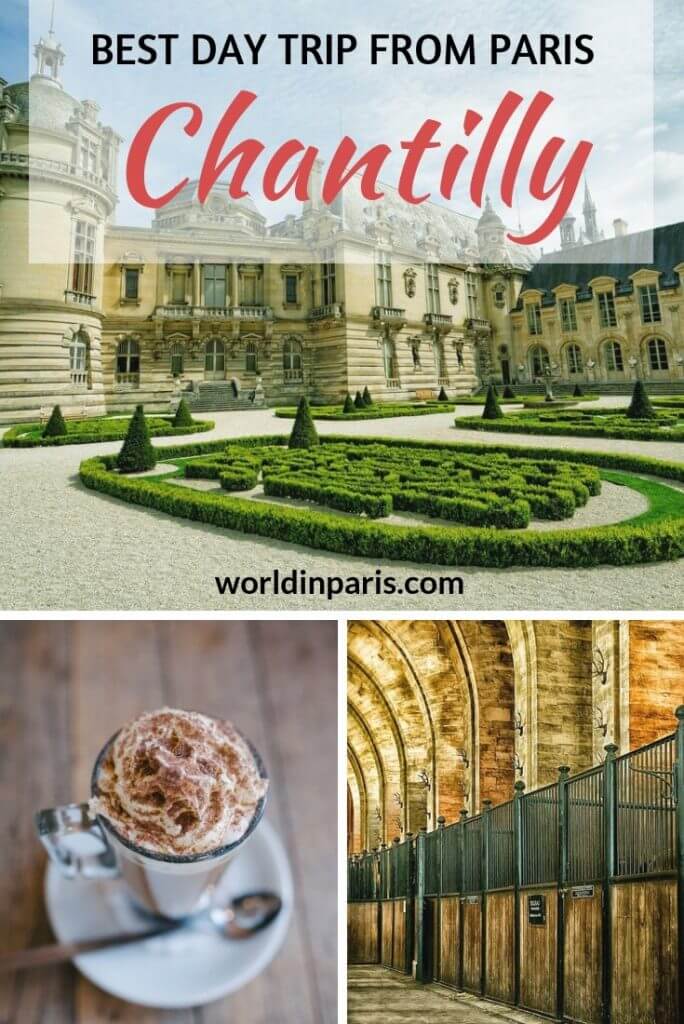
Best Things to Do in Chantilly
1.Château de Chantilly
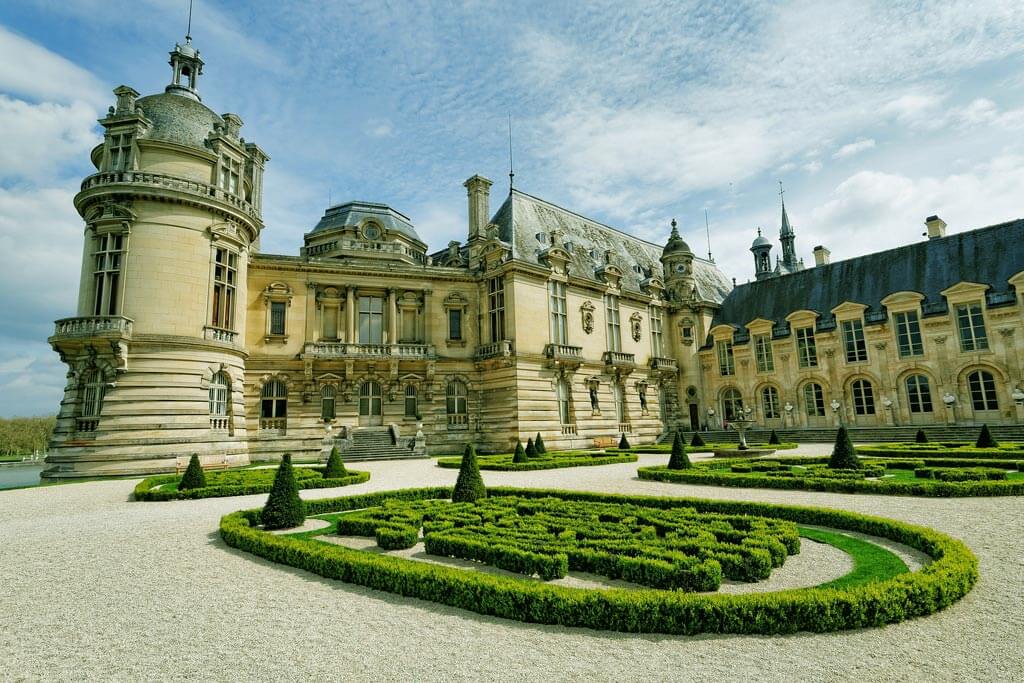
You may want to start your day trip Paris – Chantilly by the beautiful Château de Chantilly, one of the top castles in France. Château de Chantilly may not be a royal residence but this fairytale castle hosted Kings and Queens.
The town of Chantilly is dominated by a château since medieval times. The castle was destroyed many times and rebuilt again and again.
The château that you can see today is from the 19th century, and it was the home to Henri d’Orléans, son of the last King of France. Château of Chantilly has a spectacular setting, located at the center of a small pond and surrounded by beautiful gardens and pools.
Like many other European castles, Château of Chantilly is a succession of beautiful rooms and halls, all very impressive. The most interesting rooms in this castle are the rooms related to Henri’s main passions: arts and literature.
Henri d’Orléans was a very cultivated man and a compulsive collector. Thanks to Henri, Château de Chantilly hosts today the second largest collection of artwork in France, only beaten by the Louvre’s artwork.
Henri loved to host lavish dinners with many guests. After the dinner, he enjoyed taking them to the Grande Galerie in the château where the biggest part of his collection was exhibited.
Today, the paintings in this gallery are still displayed exactly in the same position that Henri chose for them.
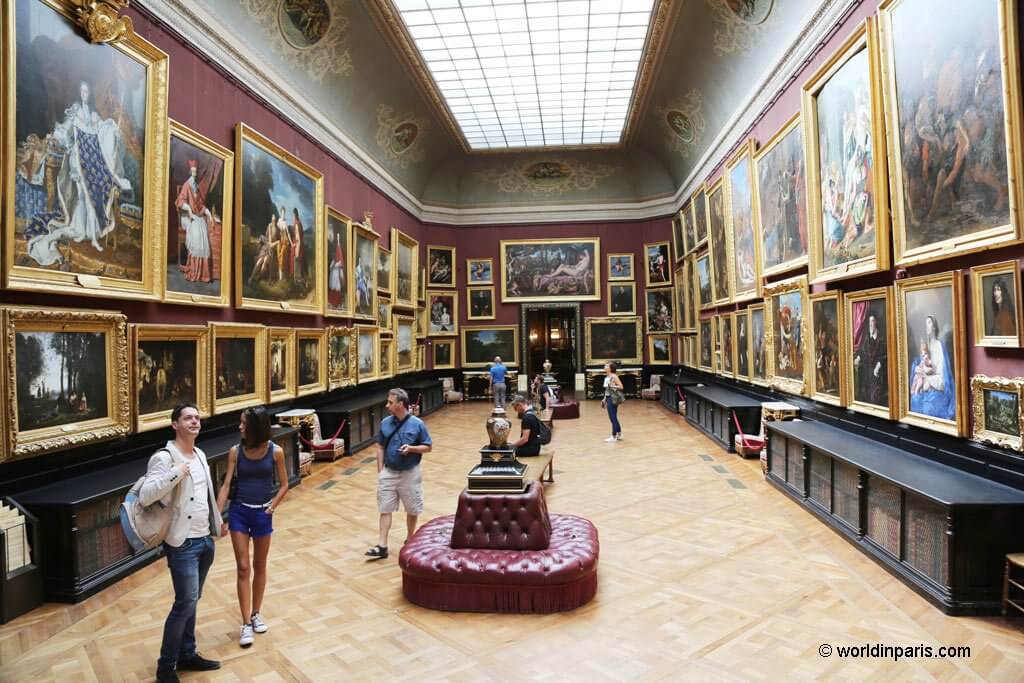
However, our favorite part of Château de Chantilly is the library. The Chantilly library hosts a collection of 60,000 rare books, including some major works of medieval art. The library and reading room design – with two levels and a gallery – is typical of library architecture in the second half of the 19th century.
Click here to buy the Château de Chantilly tickets
DID YOU KNOW? The entrance to Château de Chantilly is included in the Paris Museum Pass, so here’s an extra reason to buy it! You can read our Paris Museum Pass review here.
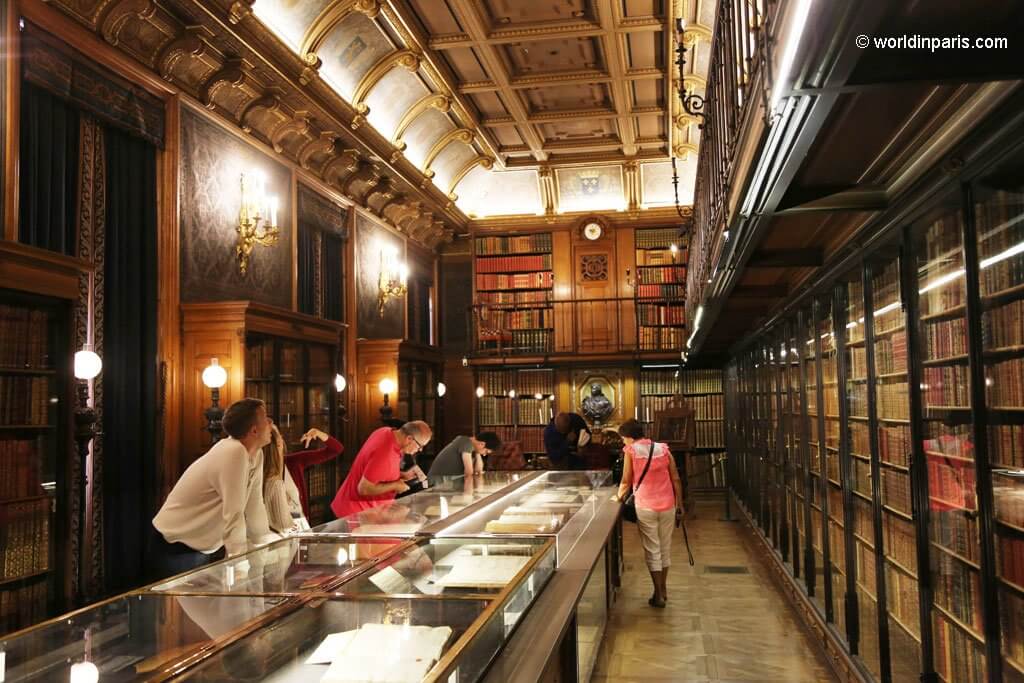
2.Chantilly Gardens
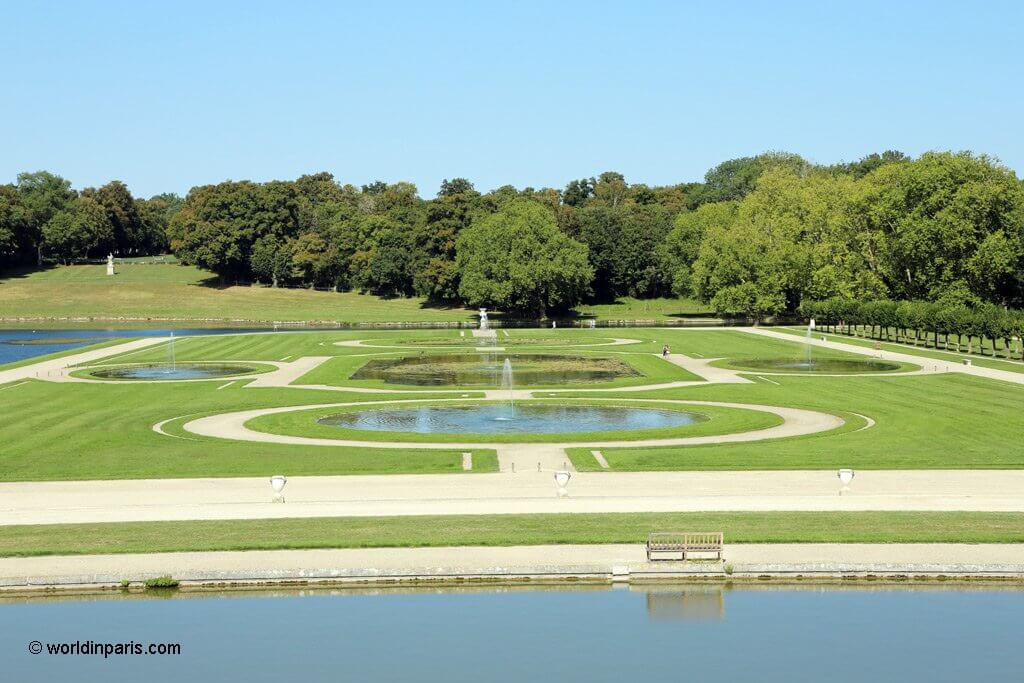
André Le Nôtre is world-known as the landscape designer of the Versailles Gardens. Still, his favorite (and dearest) creation was the magnificent French-style garden surrounding the Château de Chantilly.
The French Garden of Chantilly is previous to the Château de Chantilly that we can see today. It was designed at the end of the 17th century by André Le Nôtre for Louis II de Bourbon.
As usual, Le Nôtre structured the garden around two perpendicular axes: the first, north-south through the majestic terrace, highlights the site’s undulation; the second, east-west, is occupied by the Grand Canal through the valley.
The particularity of this French-style garden is that the east-west axis is off-center to the château.
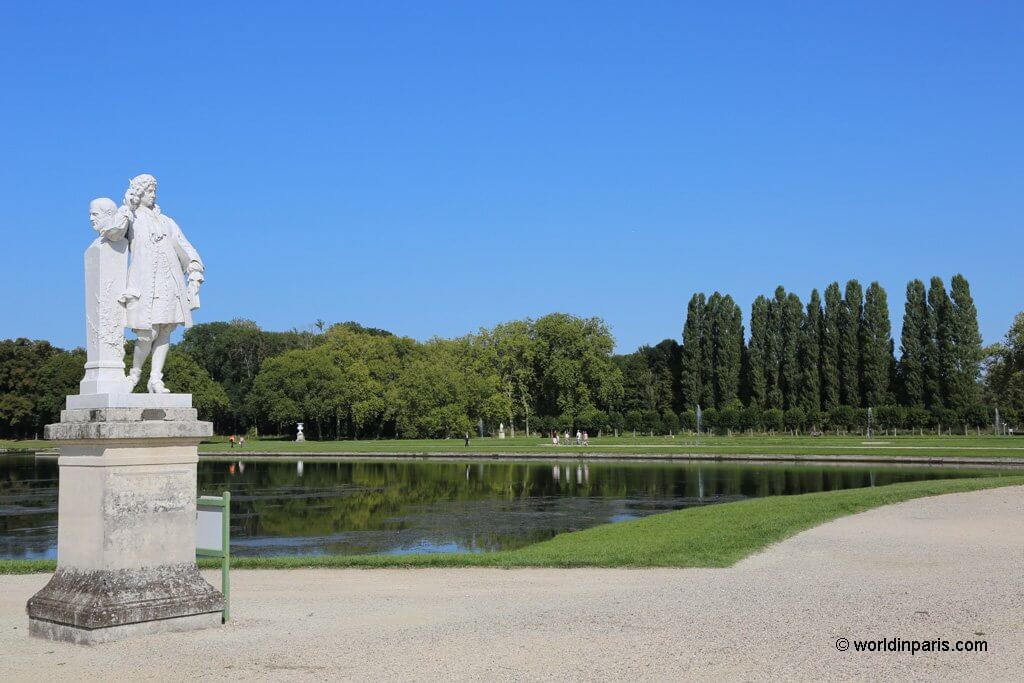
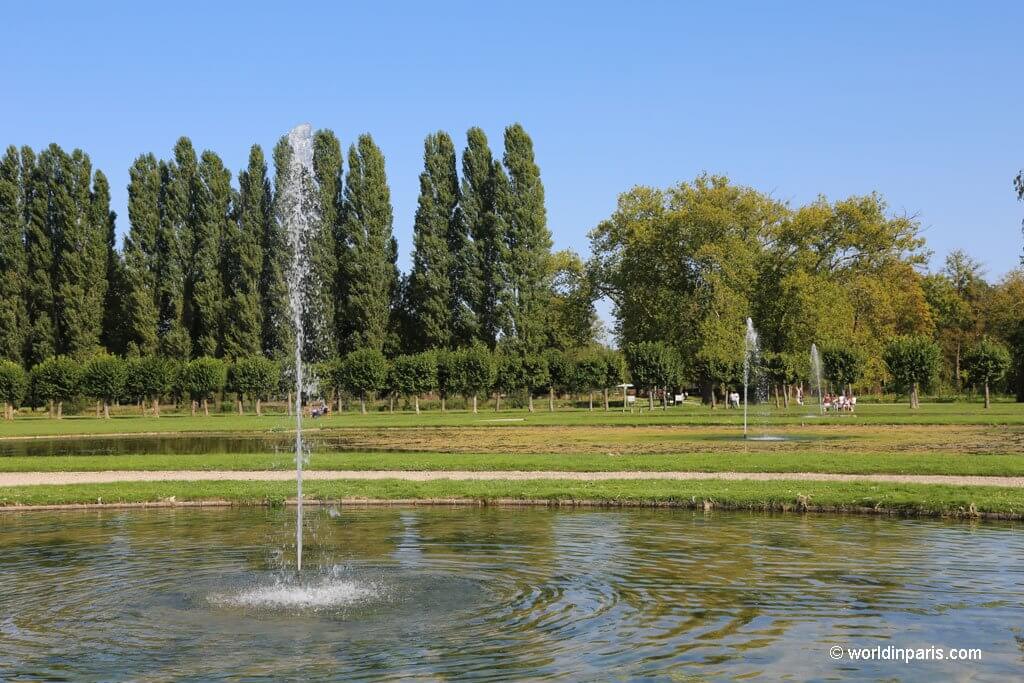
Go to the terrace for a terrific overview of the French Garden and Grand Canal. Between the terrace and the Grand Canal, north of the castle, Le Nôtre created different parterres. These parterres were decorated with flowerbeds, ponds, and other water features.
The Grand Canal was the part of the garden Le Nôtre was most proud of. This Grand Canal is 600 meters longer than the one in Versailles.
If you read our article about the Machine de Marly, you must know by now how difficult it was to bring the water from the Seine River to Versailles (the river was 10 km far from Versailles and 100 m lower). Chantilly’s Grand Canal was created via a diversion of the Nonette, a tributary of the river Oise, so it was much easier.
In Château de Chantilly, there is also an English-style garden and an Anglo-Chinese-style garden. The Anglo-Chinese garden was designed during the 18th century, and it has a cute hamlet with 5 country houses surrounded by small vegetable gardens, fruit bushes, and flower gardens. This enchanting place inspired Marie-Antoinette’s Petit Trianon in Versailles.
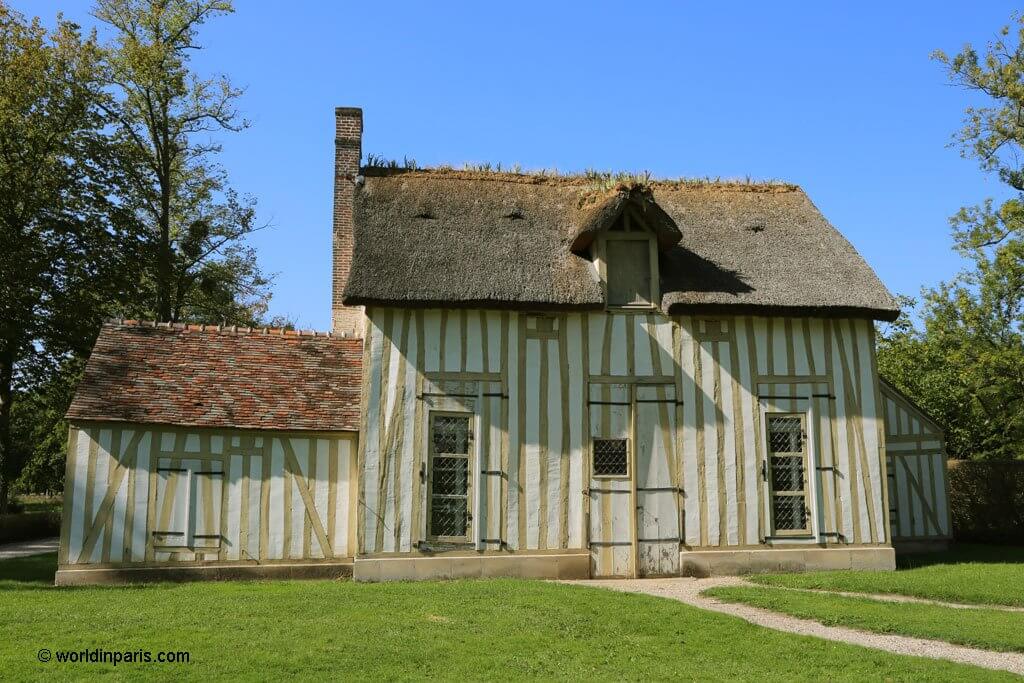
The English-style garden was the latest garden built in Chantilly, and it covers a plot belonging to Le Notre’s French Garden, which was destroyed during the French Revolution.
As usual, the English-style garden was designed with winding paths and untamed wilderness and it was enhanced by small romantic structures like a waterfall or a temple of Venus.
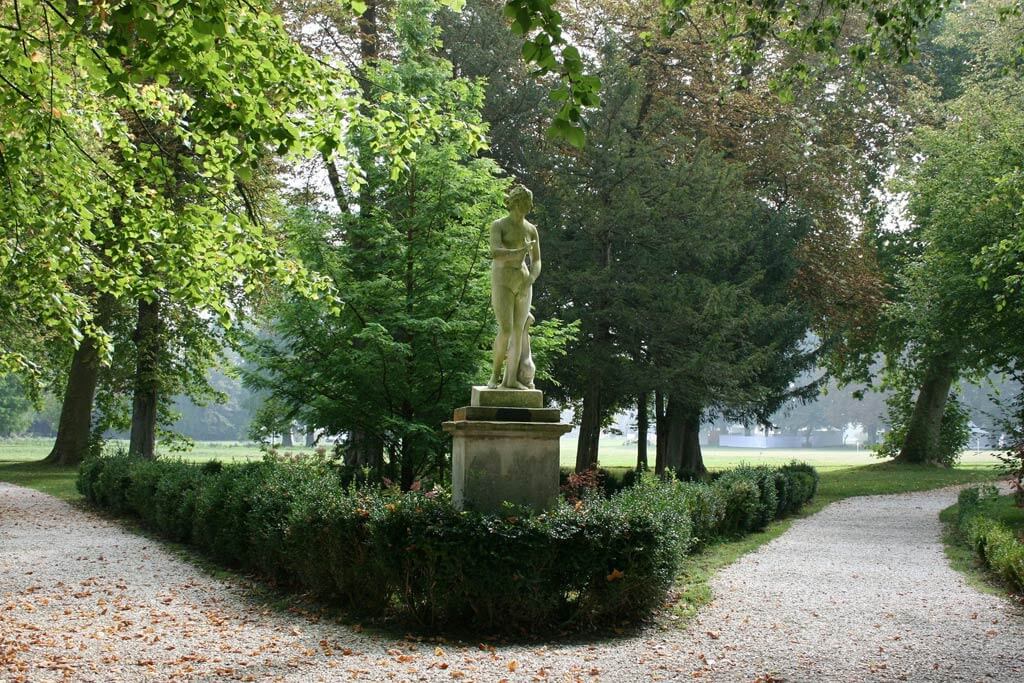
3.Chantilly Stables and the Horse Museum
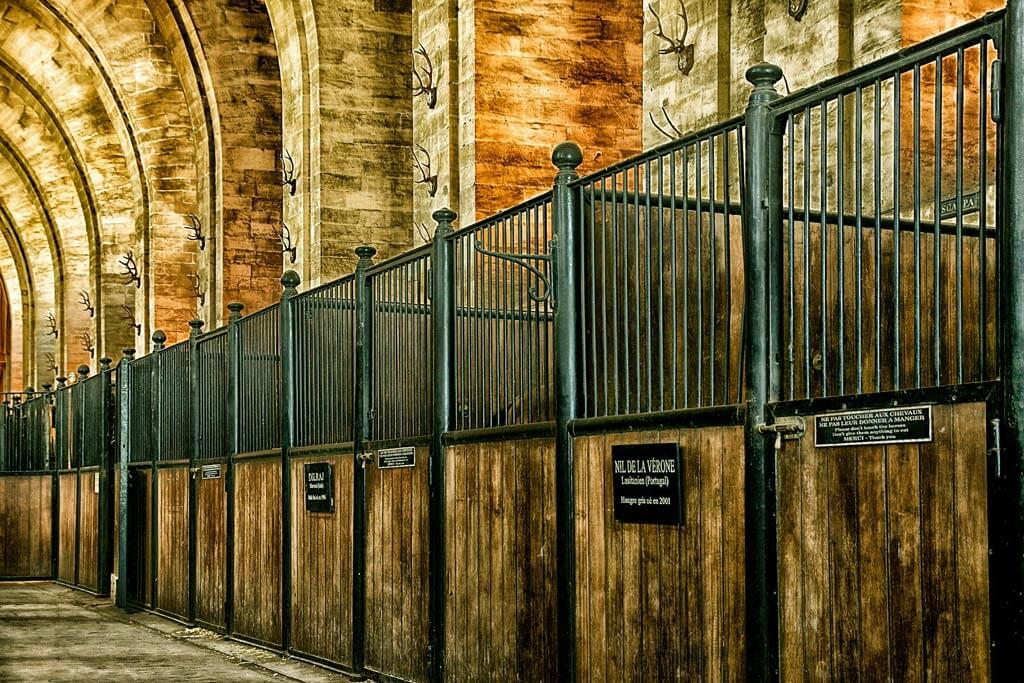
Sure, Château de Chantilly attracts many visitors but the main attraction in Chantilly is the Grandes Écuries. The Grandes Écuries are the largest stables in Europe, and they are devoted to the art of Haute-école horse training and dressage.
The Chantilly Stables were built in the 18th century for the 7th Prince de Condé, Louis-Henri de Bourbon. The Prince de Condé was a horse passionate, and he was convinced that he would become a horse in his second life; that’s why he needed to have the most magnificent stables.
During Louis-Henri’s life, the Chantilly Stables hosted more than 200 horses and 500 hounds and he liked to organize lavish dinners in the Dome.
Today, Les Grandes Écuries hosts 30-40 horses (mostly Iberian horses) who receive daily care and education by a team of highly qualified grooms and riders. The horses are also trained for equestrian shows and daily performances in the Dome.
Apart from the everyday training, Les Grandes Écuries houses also the Chantilly Horse Museum, which is focused on the relationship between horses and men since the beginning of civilization. The museum ticket includes the Chantilly Horse Show, a 30-minute dressage show in the Dome.
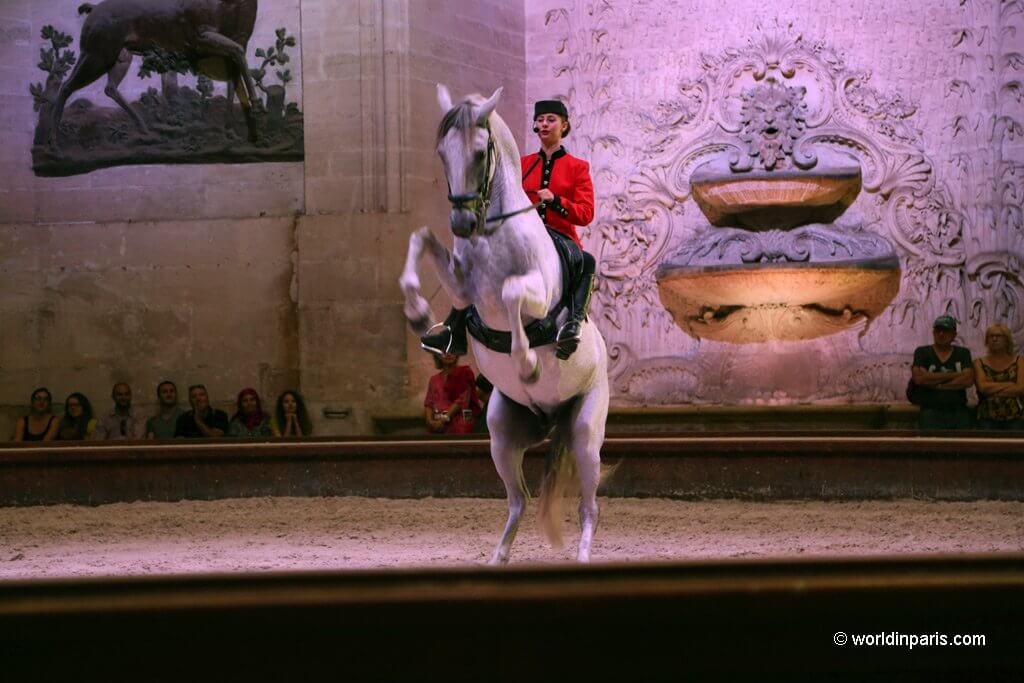
4. Chantilly Racecourse
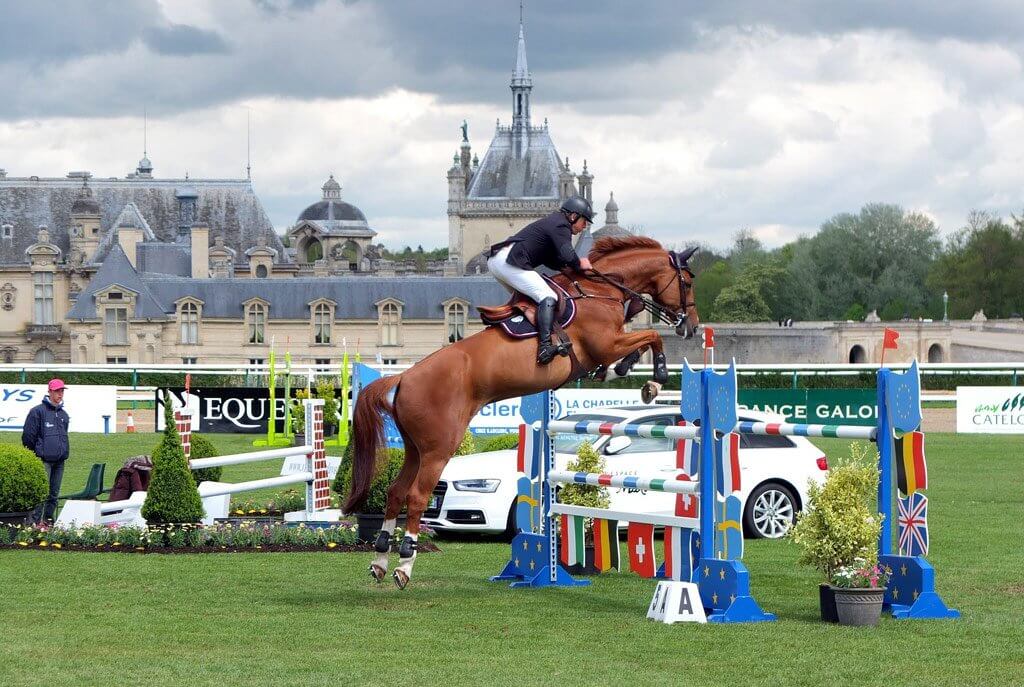
The Chantilly Racecourse was built in 1834 but it was renovated from top to bottom in the 2000s. Located just in front of the Great Stables and surrounded by the Chantilly forest, it is worth having a look at this racecourse even if there is no race when you visit Chantilly.
The Chantilly Racecourse hosts two of the most prestigious France galop races: the Prix du Jockey-Club and the Prix de Diane Longines. The Prix de Diane Longines is a symbol of wealth and elegance, with spectators wearing stylish hats and wonderful outfits.
Chantilly’s training center for this kind of race has more than 2,000 horses, spread across the neighboring municipalities of Chantilly, Gouvieux, Lamorlaye, Coye-la-Forêt, and Avilly-Saint-Léonard.
5.Last but not Least: Chantilly Cream!
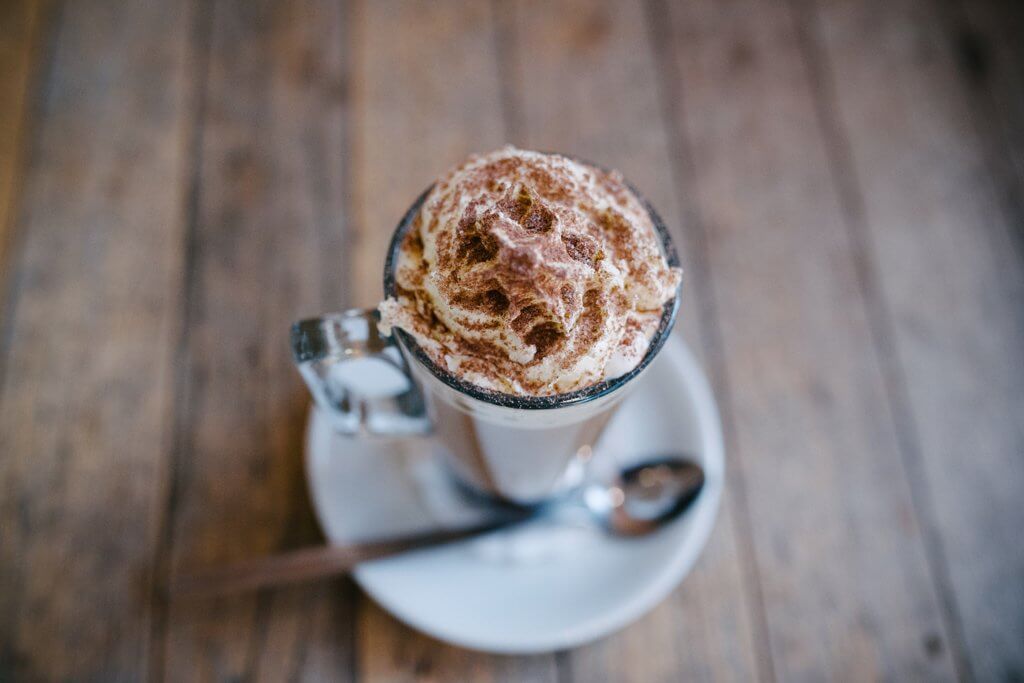
It would be a pity to leave Chantilly without tasting the crème chantilly (whipped cream with sugar), usually with a coffee or an ice cream.
It is believed the chantilly cream was invented by a man who was from Chantilly, hence the name. Another theory claims the cream’s origins in a recipe once prepared in the Château de Chantilly’s kitchens.
Visitors can have a taste of homemade chantilly cream everywhere in the town and also at La Capitainerie, the restaurant inside the Château.
Train Chantilly – Paris
To go back to Paris, take the train Chantilly – Paris at the same train station where you arrived.
Be aware that the trains traveling from Chantilly to Paris are less frequent in the afternoon than in the morning, so we recommend taking a picture of the train schedule when you arrive at Chantilly train station or checking it online to be sure you don’t have to wait a long time.
Click here for more side trips from Paris
Pin it now & read it later
